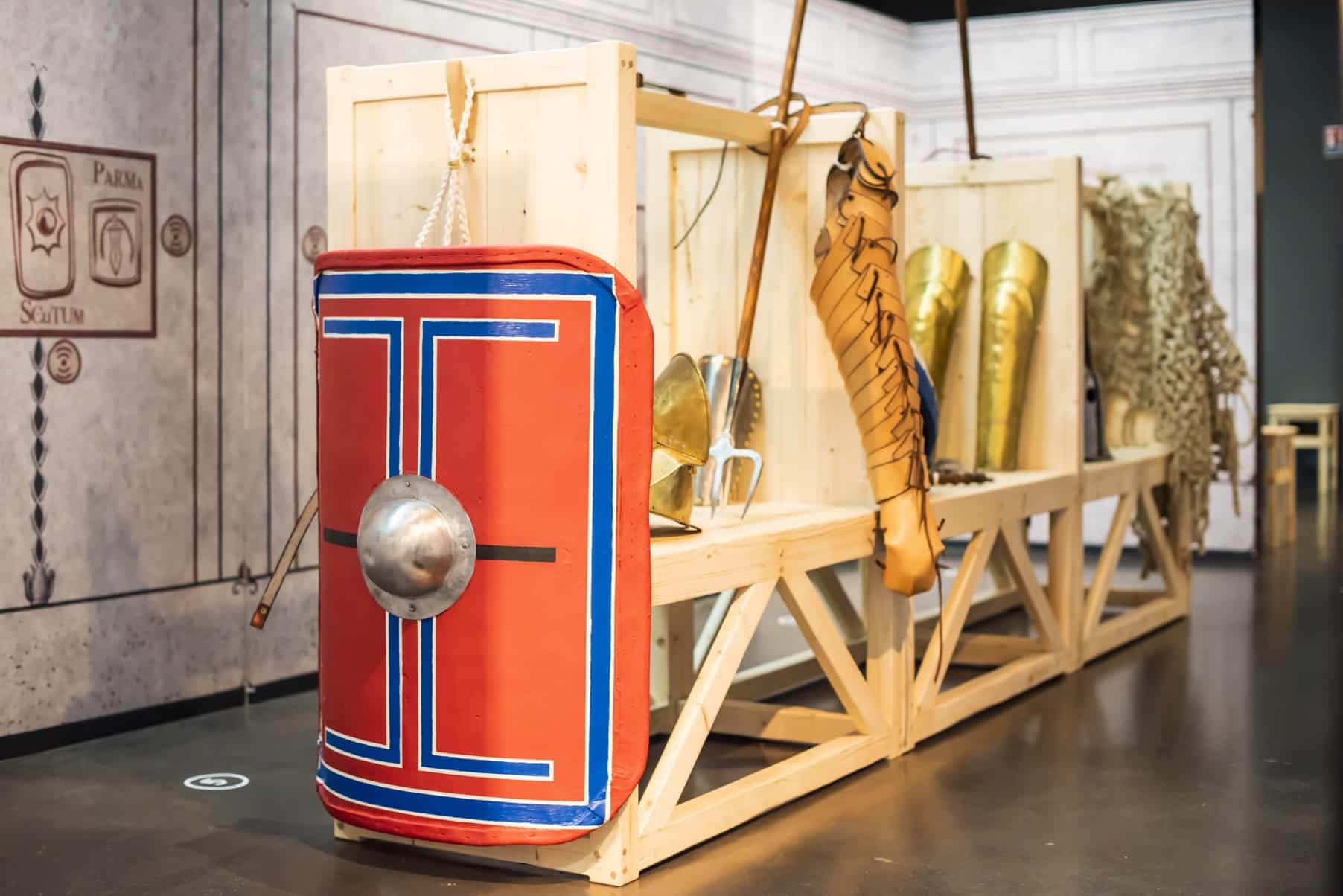Put on the magnetic bracelet and immerse yourself in the life of a Roman gladiator from the 1st century! Take control of your journey by exploring settings inspired by archaeological sources, from the ludus to spectacular amphitheaters. Choose your own destiny, discover the stages of a gladiator’s life, and gauge your fame in the public space.
An interactive connected exhibition
Through screens, engage with a variety of characters who address you, guide you, encourage you, or even reprimand you throughout your journey. Handle weapons during training, receive equipment tailored to a specific gladiatorial style, and then face your opponents in this unique experience.
The exhibition is divided into 7 parts:
- Engagement: Introduce yourself to the lanista, the master of the ludus (gladiatorial school), to become a gladiator.
- Training: Master combat techniques under the watchful eye of the doctor, the gladiator trainer, before entering the arena.
- Equipment: Explore the outfits of Provocator, Thraex, Murmillo, etc., and find your helmet, shield, and protection in the dressing room.
- Combat: Wait your turn with other gladiators, observe ongoing clashes, and learn the rules by conversing with present personalities.
- Celebrity: Leave the amphitheater, stroll through the streets to the ludus, and discover a merchant’s stall selling merchandise featuring your likeness.
- End of Career: After years of service, consult the lanista to choose between reenlisting with a substantial bonus or regaining your freedom.
- Gaming Space: Have family fun with 5 board games to learn everything about gladiatorial contests.
The Gladiator’s Equipment Gladiators among the Pictons
In addition to the immersive part, the exhibition also focuses on the archaeology of gladiatorial combat at the local level and presents objects found in the Picton territory. This territory had Limonum, present-day Poitiers, as its chief town and was bordered to the north by the Roman port of Ratiatum, on the remains of which Le Chronographe in Rezé is located. The archaeological pieces on display highlight the importance of gladiators in Gallo-Roman society, with objects that would be considered today as “merchandise.”
Archaeological Treasure: A Gladiator Helmet from the 2nd and 3rd Centuries in Roman Gaul presented!
During excavations on the Cordeliers islet in Poitiers in 1998, fragments of three gladiator helmets from the 2nd and 3rd centuries were found in former ironworking workshops, right in the city center. This discovery is particularly significant as it represents the only gladiator helmets found in Roman Gaul. Compared to helmets from Pompeii, they reveal the existence of a specific variant and are thus called “Poitiers type.” One of them is featured in the exhibition!

Le Chronographe, Rue Saint-Lupien, Rezé
How to get there?
Public transport: Clos Bonnet, Le Corbusier, Mairie de Rezé, Platière
Self-service bicycles: Mairie De Rezé (n°113), Pôle Social Marion Cahour (n°112)
Closed today.
Free for PASS Nantes holders
Book PASS Nantes
Free for holders of the Nantes Pass or the museum's annual pass.
Museum Pass: €15 (valid for one year from date to date in the 5 metropolitan museums).
Free admission on the 1st Sunday of each month, except July and August.
4 € - Reduced rate : 1,50 €
Free for under-18s, disabled people and their carers, and jobseekers.
Audio loop available at reception.
Surtitled videos.